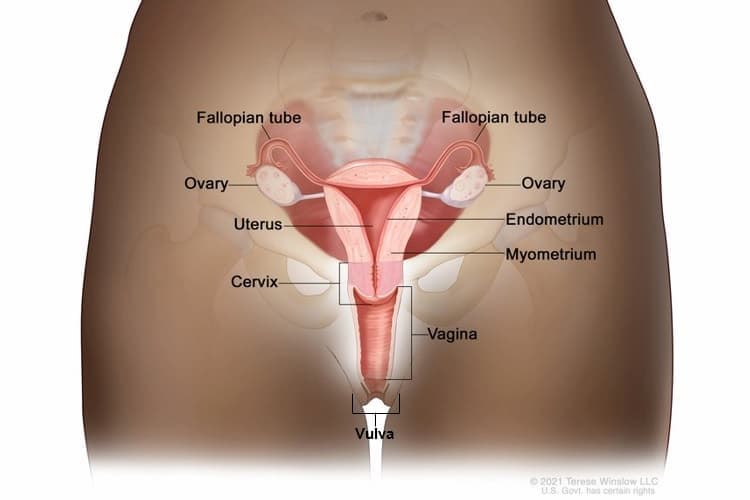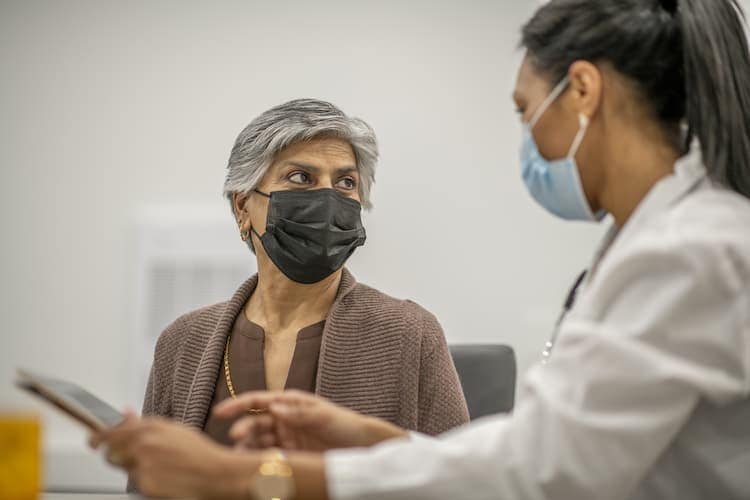Basic Information About Vaginal and Vulvar Cancers

This diagram shows different parts of a woman’s reproductive system.
© 2021 Terese Winslow LLC. U.S. Govt. has certain rights. Used with permission. Contact artist at www.teresewinslow.com for licensing.
Cancer is a disease in which cells in the body grow out of control. Cancer is always named for the part of the body where it starts, even if it spreads to other body parts later.
When cancer starts in the vagina, it is called vaginal cancer. The vagina, also called the birth canal, is the hollow, tube-like channel between the bottom of the uterus and the outside of the body.
When cancer forms in the vulva, it is vulvar cancer. The vulva is the outer part of the female genital organs. It has two folds of skin, called the labia. Vulvar cancer most often occurs on the inner edges of the labia.
Vaginal and vulvar cancers are very rare. While all women are at risk for these cancers, very few will get them. Together, they account for about 7% of all gynecologic cancers diagnosed in the U.S.
Several factors may increase the chance that you will get vaginal or vulvar cancer.
The HPV vaccine protects against the types of HPV that most often cause vaginal and vulvar cancers.
Symptoms of vaginal cancer may include vaginal discharge or bleeding, a change in bathroom habits, or pelvic pain. Vulvar cancer symptoms may include skin changes in the vulva or sores, lumps, or ulcers on the vulva.
Since there is no simple and reliable way to screen for vaginal or vulvar cancers, it is especially important to recognize warning signs and learn what you can do to lower your risk.



